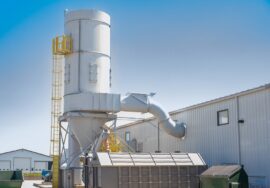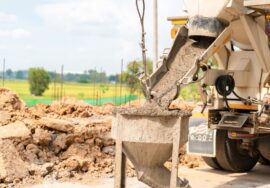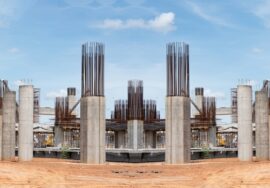
Stormwater Management in Construction
Stormwater Management in Construction
As cities expand and infrastructure grows, construction activities significantly alter natural drainage systems. The disruption of soil and vegetation during these projects often increases surface runoff, leading to flooding, erosion, and water pollution. That’s why stormwater management in construction is a vital component of sustainable building practices.
Effective stormwater management ensures that rainwater is properly collected, filtered, and discharged — protecting the environment, complying with regulations, and maintaining the safety of construction sites.
What Is Stormwater Management in Construction?
Stormwater management in construction involves planning and implementing systems to control rainwater runoff during and after the construction phase. Its goal is to prevent excessive water flow, sedimentation, and contamination that can harm ecosystems and nearby communities.
In construction sites, stormwater often carries soil, chemicals, and debris, which can pollute rivers and groundwater. Hence, a well-designed stormwater management system is essential to minimize environmental impact and ensure compliance with environmental standards.
Importance of Stormwater Management
Construction projects can cause severe water-related issues if stormwater management is neglected. Below are key reasons why it’s critical:
-
Prevents Flooding: Proper drainage channels reduce water accumulation and flooding near sites.
-
Reduces Erosion: Minimizes soil loss and structural instability.
-
Protects Water Quality: Filters out contaminants before discharge.
-
Ensures Legal Compliance: Meets environmental regulations and project approval conditions.
-
Supports Sustainability: Promotes eco-friendly and green construction practices.
Implementing stormwater management in construction not only safeguards the environment but also improves the project’s reputation and long-term sustainability.
Effective Stormwater Management Techniques
Modern stormwater management in construction uses a combination of preventive and control measures to manage runoff efficiently.
1. Sediment Control Structures
Silt fences, sediment basins, and check dams help trap soil and debris, preventing sediment from leaving the construction site.
2. Erosion Control Measures
Techniques such as mulching, turfing, and retaining walls stabilize soil and minimize erosion caused by rainwater.
3. Permeable Pavements
Using porous materials for driveways, walkways, and parking areas allows water to seep into the ground instead of running off the surface.
4. Detention and Retention Ponds
Detention ponds temporarily hold stormwater and release it slowly, reducing the impact of heavy rainfall, while retention ponds store water for reuse or infiltration.
5. Vegetative Swales and Green Roofs
These natural drainage systems absorb and filter rainwater, improving management efficiency and supporting biodiversity.
6. Rainwater Harvesting Systems
Collecting rainwater for reuse in construction activities supports water conservation and reduces dependency on groundwater.
Regulations for Stormwater Management in India
In India, management in construction is regulated by environmental authorities to minimize pollution and flooding risks. The Central Pollution Control Board (CPCB) and local municipalities enforce drainage and runoff standards under the Environment (Protection) Act, 1986.
Builders must include stormwater drainage systems in project designs to obtain environmental clearances. The National Building Code (NBC) also mandates stormwater infrastructure that prevents contamination of water bodies and promotes groundwater recharge.
Additionally, several Indian cities have introduced guidelines for sustainable urban drainage systems (SUDS) to integrate stormwater management with urban sustainability goals.
Benefits of Implementing Stormwater Management
-
Environmental Protection: Prevents sedimentation and chemical pollution in rivers and lakes.
-
Soil Preservation: Maintains topsoil integrity and reduces erosion.
-
Groundwater Recharge: Encourages natural infiltration.
-
Regulatory Compliance: Aligns with CPCB and local authority standards.
-
Enhanced Project Value: Improves sustainability rating and client trust.
By incorporating management in construction, developers demonstrate commitment to environmental responsibility and long-term resilience.

Integrating Stormwater Management with Green Construction
Effective management works best when combined with other sustainable building practices like erosion and sediment control, waste management, and low-emission construction equipment. Together, these practices contribute to carbon footprint reduction and better building performance.
Using smart sensors and smart building technology, construction companies can monitor water flow and weather data in real-time, allowing proactive management of stormwater and resource efficiency.
Partner with AMS India for Sustainable Construction Solutions
At AMS India, we specialize in sustainable construction management, including management systems that reduce runoff, prevent pollution, and improve site safety.
Our expert solutions align with environmental impact mitigation standards and national regulations, ensuring projects remain both compliant and eco-friendly.
Conclusion
Proper management in construction is essential to control runoff, prevent pollution, and maintain soil stability. By integrating advanced drainage systems, vegetative solutions, and water reuse technologies, construction firms can create environmentally responsible and climate-resilient sites.
Adopting sustainable management practices today ensures a safer, cleaner, and greener tomorrow for communities and ecosystems alike.
Read more related articles to enhance your knowledge and make informed decisions
Cost-Effective Modular Construction: Fast, and Sustainable Building Solutions
Smart Modular Buildings: Innovative, Efficient, and Sustainable Construction








